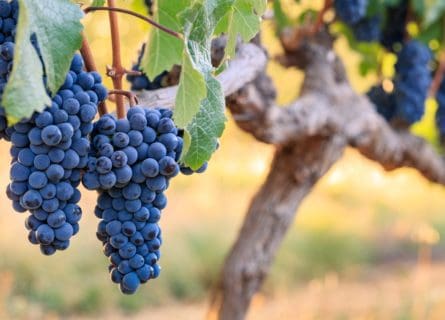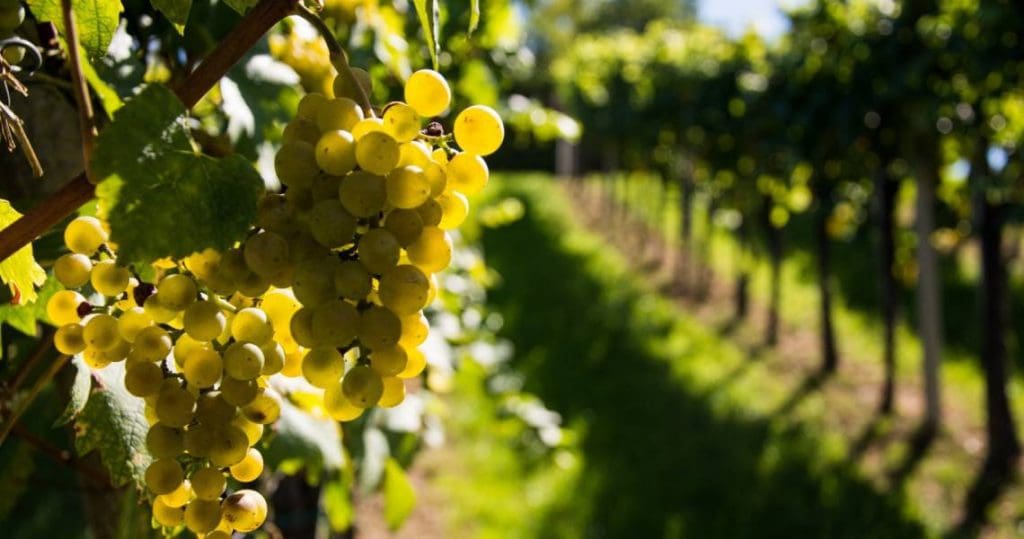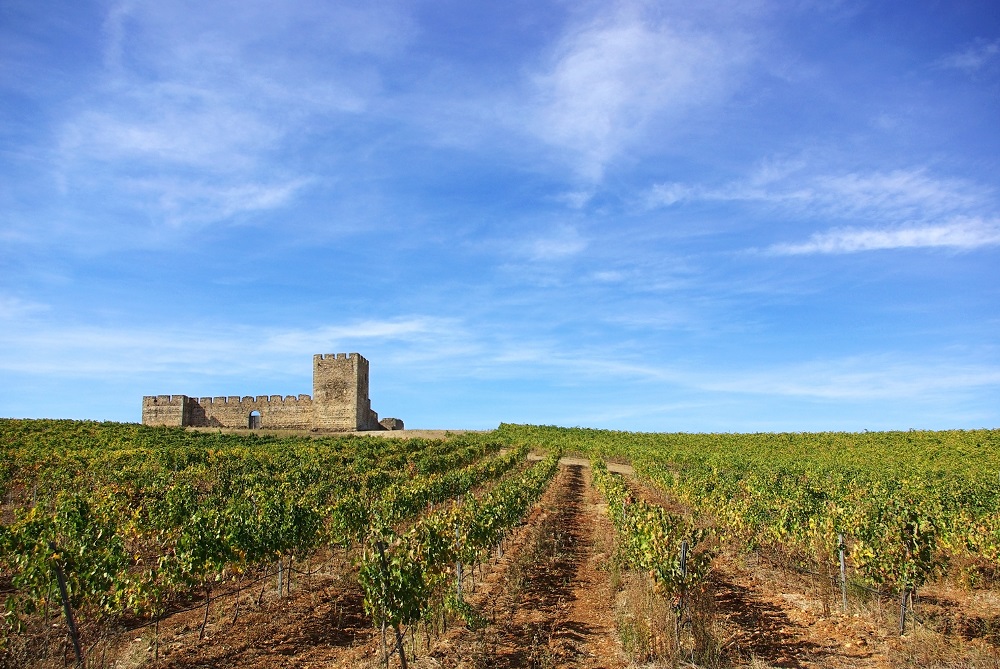
Cabernet Franc Grape Variety: Steps into the Spotlight
February 18, 2022
Cabernet Franc grape is a close relative of Merlot and Cabernet Sauvignon and is the principal blending grape used in Bordeaux.
By: James lawrence / Last updated: February 3, 2025
Estimated reading time: 9 minutes
Don’t listen to the naysayers who proclaim that wine is predictable – it is anything but! In the arid, dusty plains of Portugal’s Alentejo region, it should be virtually impossible for winemakers to craft fresh and vibrant white wines brimming with ripe acidity and a cornucopia of tropical fruit. And yet, they somehow manage it. Indeed, after being shrouded in obscurity for decades, Alentejo has emerged as one of the country’s premier regions, exporting delicious and fruit-driven wines of all three colors. But how do they do it?

Guide to Portuguese White Wine: Read more
As always, good raw materials are a big part of the equation. In Antão Vaz, winegrowers have a variety that ticks all the boxes:
Most importantly, the wine is usually excellent – buttery and opulent. So, let’s get better acquainted with Alentejo’s leading white grape. It may offer a surprise or two.
Antão Vaz has been popular in the hot-climate vineyards of Portugal for many centuries; only varieties with high resistance to drought can survive in such conditions. Unfortunately, however, its exact origins are not currently known. Although, of course, the Portuguese will insist that Antão Vaz is indigenous to the Alentejo region, however, that is not certain. Genetic analysis, meanwhile, tells us that it is a cross of the white Spanish grape Jaén and the extinct red grape Joao Domingos. So it is very plausible that Antão Vaz began life in southern Spain before emigrating across the border into neighboring Portugal.
Today, Alentejo offers a treasure trove of architectural masterpieces, including a large concentration of Neolithic Dolmens (ancient stone tomb structures) scattered across the landscape. The Romans were the first civilization to normalize wine growing in Alentejo – they arrived in 216 BC after conquering the entire Iberian Peninsula. Yet the land between the Douro and Tagus rivers was named Lusitania after the Celtiberian tribe that was indigenous to Portugal. However, the area south of Lisbon was considered an extension of Andalucia. Here, the Romans pioneered a method of wine production that survives today: Vinho de Talha. It involves fermenting Antão Vaz – and other grape varieties – in talha (large clay jars) that are impermeable. Think of it as history’s first stab at small-batch, artisan winemaking!
In the Roman era, after the wine was fermented and separated from the skins and stems, the wine would have been sealed into a new jar under a layer of olive oil and adulterated with sugar, herbs, and possibly seawater. Eventually, the wine would have been accessed via a ‘tap’ built into the base of the talha. We can only imagine what it tasted like a sweet and potent brew of the ancient world. But the Romans’ influence went far beyond wine; bridges, paved roads, theatres, dams, aqueducts, and amphitheaters were all part of their cultural legacy. Then, of course, we could add salt mining, fishing, and shipbuilding to that list. To this day, the oldest wine cellar in the Iberian Peninsula is located in Alentejo: the Roman ruins of Sao Cucufate in the town of Vila de Frades are an incredible monument to Europe’s fascinating past.
Yet, despite its numerous achievements, the Western Roman Empire fell apart in 476 AD. The province of Hispania (modern-day Spain and Portugal) was attacked and subjugated by various civilizations, including Germanic tribes such as the Visigoths, who established a capital in Toledo in the 6th century. However, the Moors invaded Spain in 711, building a mighty power that included Alentejo. This Muslim civilization profoundly impacted the day-to-day life in Portugal; the Moors introduced weaving and leather goods, in addition to new ways of navigating ocean voyages. They also greatly influenced the architectural style of modern-day Portugal – many villages in the south are a maze of white-washed houses and cobbled streets, a legacy of the Moorish planners.
However, reconquest by the Christian Kingdoms began in the 11th century, culminating in the recapture of Granada in 1492. During this hard-fought campaign, Portugal, a then small county in the kingdom of Castilla y Leon, was granted independence by Alfonso Henriques in 1139. With the help of English knights, Henriques took Lisbon from the Moors in 1147. During this time in history, the kingdom of Portucale expanded into the territories of Alentejo and the Algarve while Portuguese sailors began to explore the New World.
Trade with the East, combined with the colonization of Brazil, brought incredible wealth to the citizens of Portugal. However, Spain invaded Portugal in the late 16th century, retaining control for 60 years. Nevertheless, after Portugal regained its independence, the nation enjoyed a relatively long period of economic prosperity. A new middle class thrived in Portugal, partly due to the buoyant trade in gold mining across the Atlantic in Brazil.
Unfortunately, the good times ended when Napoleon invaded Portugal in 1807. Further losses, including Brazil and its lucrative trade in precious metals, left the country on an economic knife edge. This widespread poverty was felt keenly in the Alentejo region, Portugal’s so-called ‘breadbasket.’ Indeed, poverty was widespread until the late 1900s, before which many Portuguese emigrated in search of a better life. Yet certain estates, passed down from generation to generation, survived. For most of the 20th century, tobacco, wheat, and other agricultural products were the mainstay of Alentejo’s economy. Finally, however, entrepreneurs from Lisbon – and further afield – started investing in this impoverished land, mindful of its untapped potential and transport links to Lisbon and the Algarve. The results speak for themselves: Alentejo has been transformed into a thriving wine region, with over 280 wineries and 1800 growers.
This brings us nicely to Antão Vaz. One of Alentejo’s major USPs is producing aromatic and fresh white wines that are both affordable and widely available. As a result, they have become a major hit – at home and abroad. But, many grape varieties could not survive in the torrid climate of Alentejo, which is where Antão Vaz comes in. As robust as a titanium alloy, the grape can tolerate incredible hydric stress and intense heat. Usually achieving full ripeness before fall sets in, Antão Vaz produces the best results when planted on deep soils. So too, is the yield consistent: the variety delivers large bunches laden with thick-skinned berries. However, the yield will need to be controlled in certain years, as an excessive crop can lead to dilution.
Antão Vaz boasts quite a sizable fan club in the vineyards of Alentejo. But, this is not simply because it offers a reliable yield. On the contrary, winemakers love the grape due to its versatility and ability to absorb a surprising degree of maturation in barrique. However, they will also tell you that Alentejo has two distinct expressions depending on when the berries are picked. If the berries are harvested relatively early, they are usually fermented in stainless steel without the addition of wood – new or otherwise.
This is done to accentuate the grape’s beautifully fresh acidity and lively fruit profile: citrus, melon, and pear. Great care will be taken to avoid oxidation at all stages of the winemaking; sulfur will be added during the pressing stage, while only free-run juice will be transferred to the fermentation vessel. Conducted slowly and at low temperatures, vinification in stainless steel protects primary fruit aroma, creating a style of white that is the height of fashion worldwide.
Flip the coin to a much later harvest, and an entirely different interpretation of Antão Vaz rears its head. A period of aging in wood, often coupled with limited skin contact, produces a wine that could be described as ‘Chardonnay on steroids.’ Endowed with an exotic richness that could only emanate from Antão Vaz, the wine nonetheless offers some of the finesse and structure common to Premier Cru Meursault. It is also sometimes blended with Roupeiro and/or Arinto to bolster the acidity in hotter years. That said, many fine examples are mono-varietal wines.
There is nowhere else quite like Alentejo. Once a backwater region with few prospects, this part of southern Portugal now hums with prosperity. Significant investment from residents and international stakeholders has elevated Alentejo wine to the first division. Yet its most remarkable attribute is the synergy that binds proud traditions with 21st-century innovation.

On the one hand, Alentejo is now brimming with thirst-quenching whites that can compete with the best of Europe and the New World. On the other hand, the tropical-fruited Antão Vaz, reliably pungent and fresh, has played an important role in raising the region’s status in key export markets. Who could resist a rich, tangy mouthful of pineapple, guava, citrus, and melon? Once dismissed by critics as rustic plonk, Alentejo whites are now taken seriously, especially those made in the cooler Portalegre subregion in the north. Organic viticulture, meanwhile, comes very easily in this very dry and warm climate. However, the enthusiastic adoption of modern technology and innovative viticultural techniques has made this revolution possible. More sophisticated canopy management, laboratory analysis, cool fermentation, drip irrigation, and carefully timed acidification – are all vital elements in contemporary winemaking. Without them, Antão Vaz would taste very different indeed!
Nevertheless, maintaining a strong link to the past has become equally important in Alentejo’s vineyards. An increasing specialty is Talha wine, fermented in large clay pots that recall the days of the Romans. Co-ops abandoned this age-old method in the mid-1900s in favor of cost-efficient fermentation in concrete tanks. But, talha is again in vogue in Alentejo, regulated by a DOC unveiled in 2010. It states that the Antão Vaz grapes must be destemmed, fermentation must occur in the clay jars, and the wine must remain on its skins until Saint Martin’s Day (11 November) the same year of harvest. So, take one sip and prepare to be amazed: to drink Talha wine is to take a journey into the ancient past. It could only happen in Alentejo.
If you would like us to customize an exclusive luxury tour, contact us and let us know your travel plans. We offer luxury food and wine tours for private groups of a mininium two guests. In addition, all of our private, chauffeured tours are available year-round upon request.

